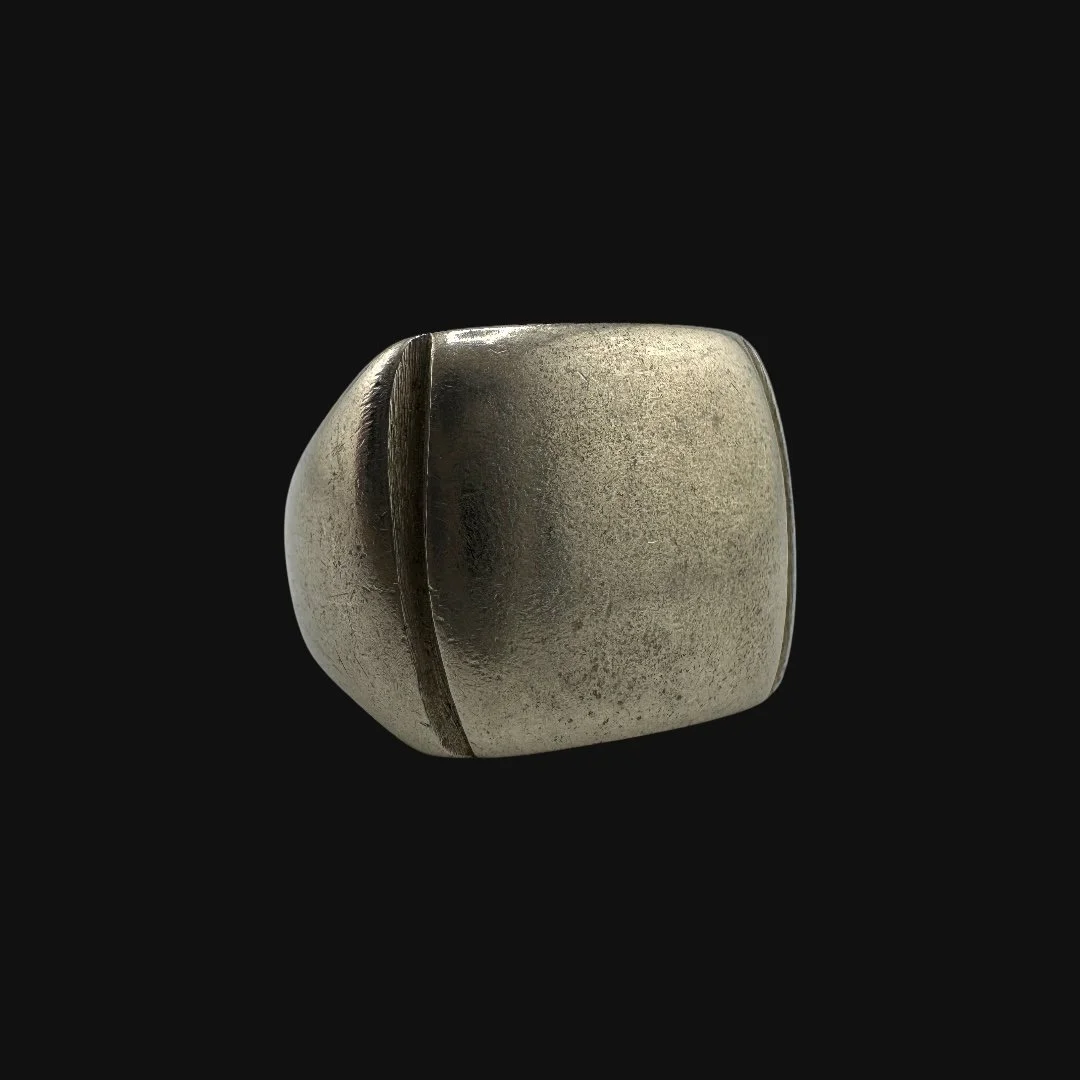 Image 1 of 12
Image 1 of 12

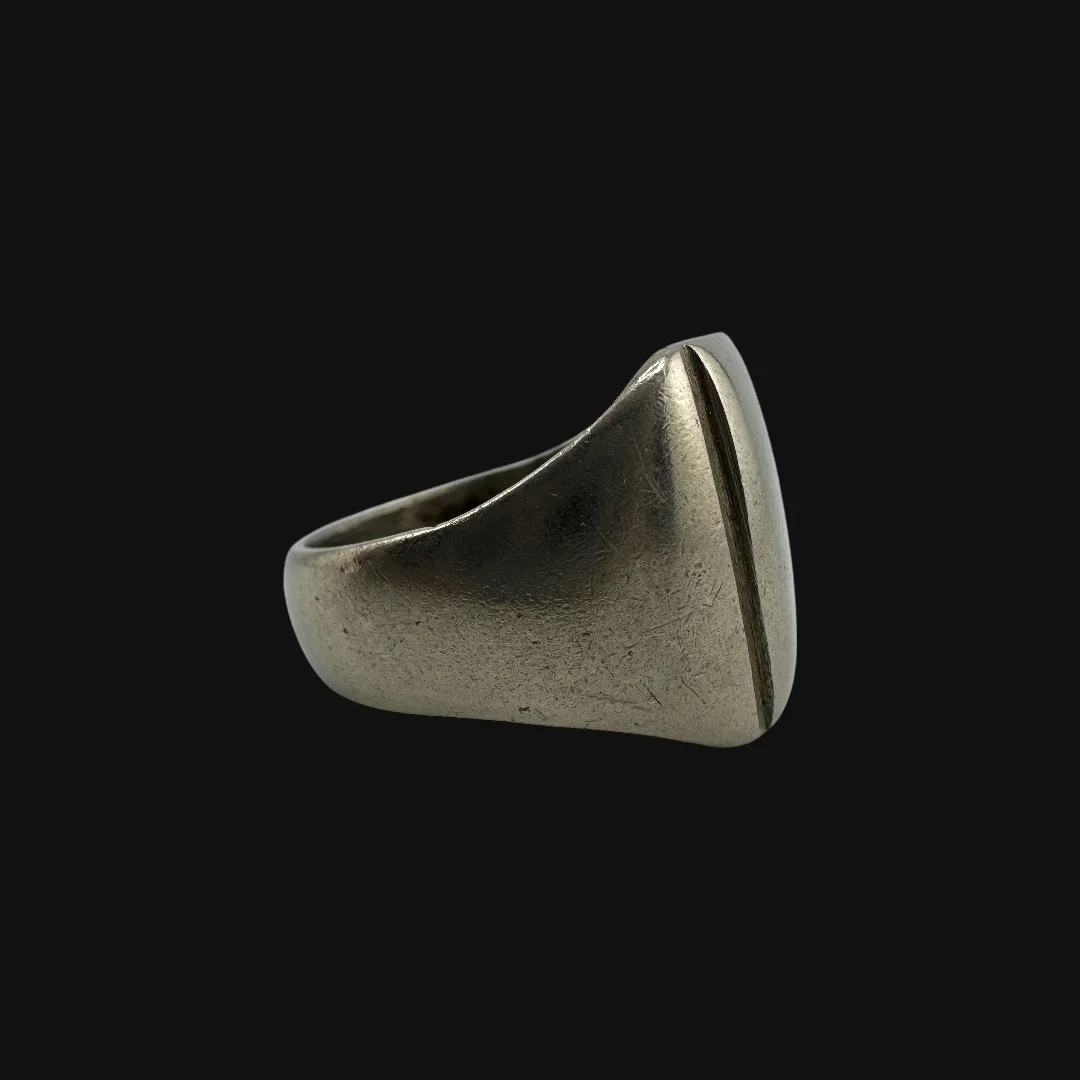 Image 2 of 12
Image 2 of 12

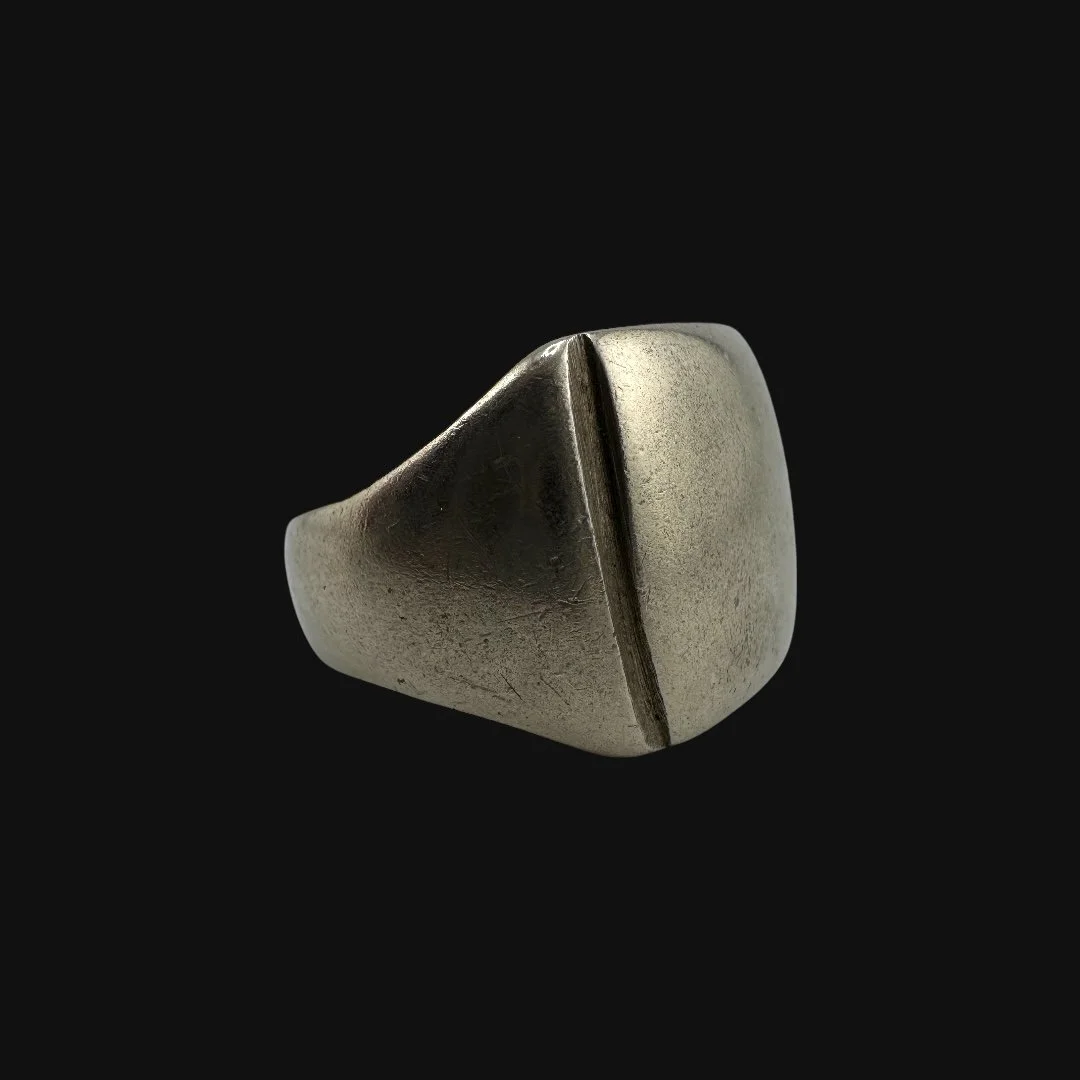 Image 3 of 12
Image 3 of 12

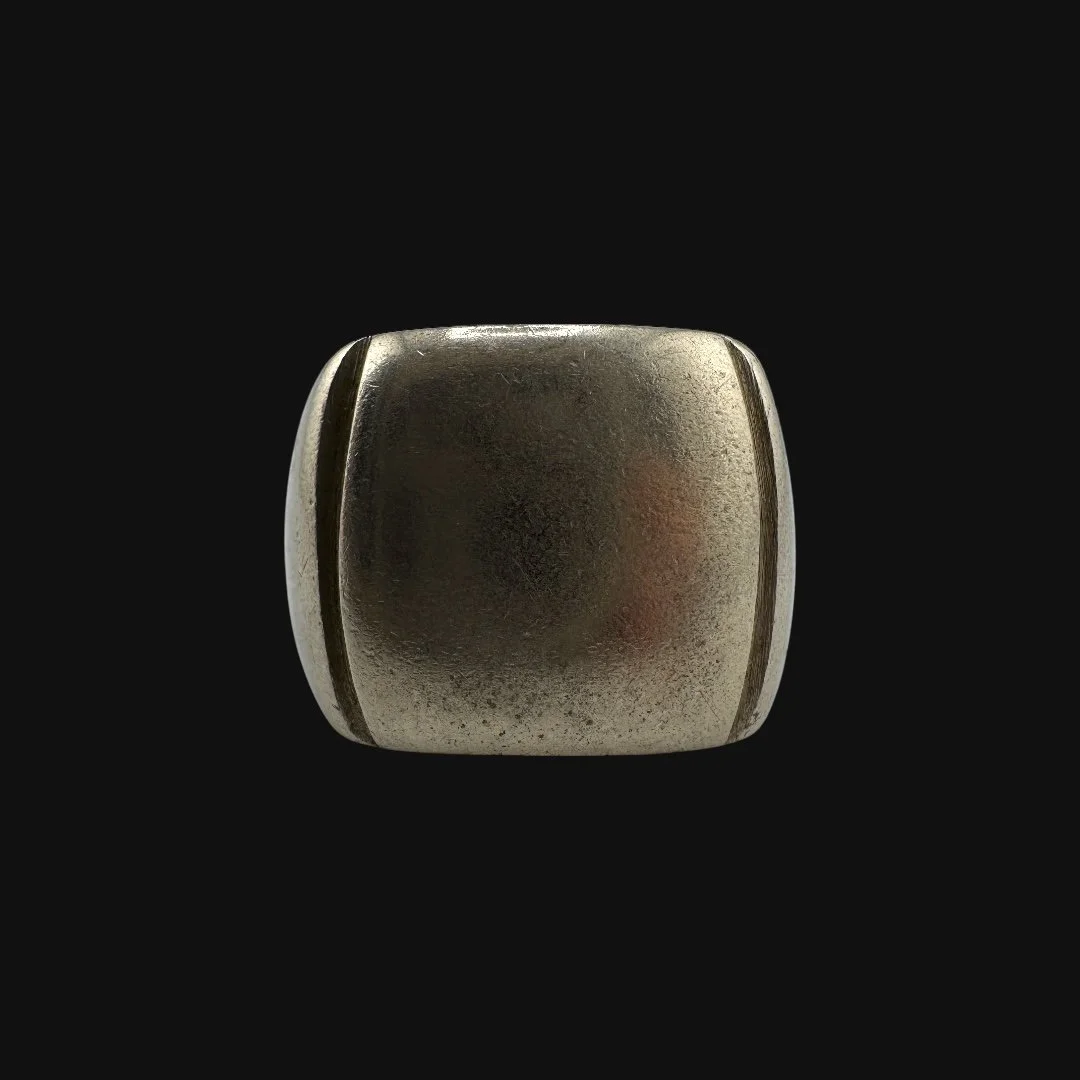 Image 4 of 12
Image 4 of 12

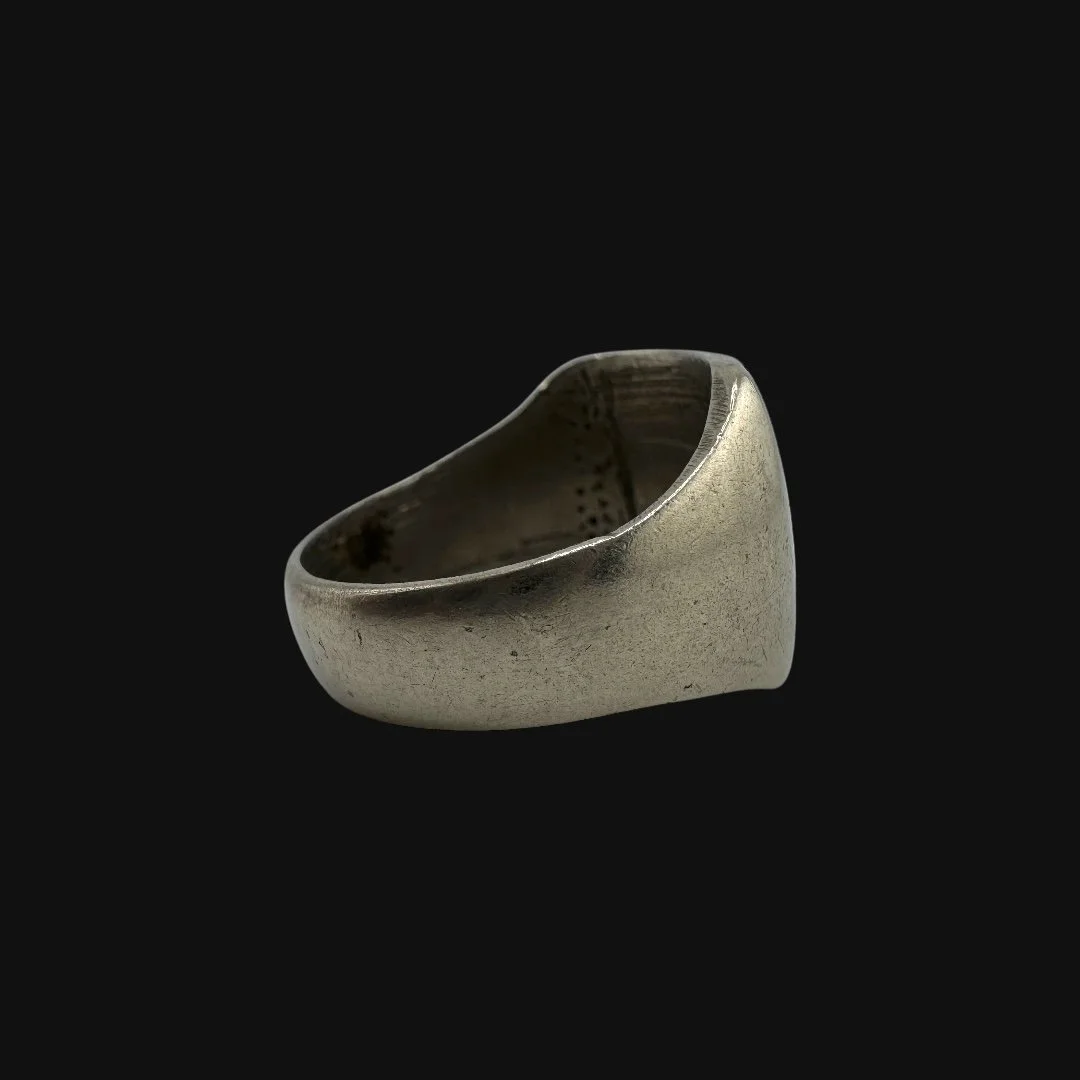 Image 5 of 12
Image 5 of 12

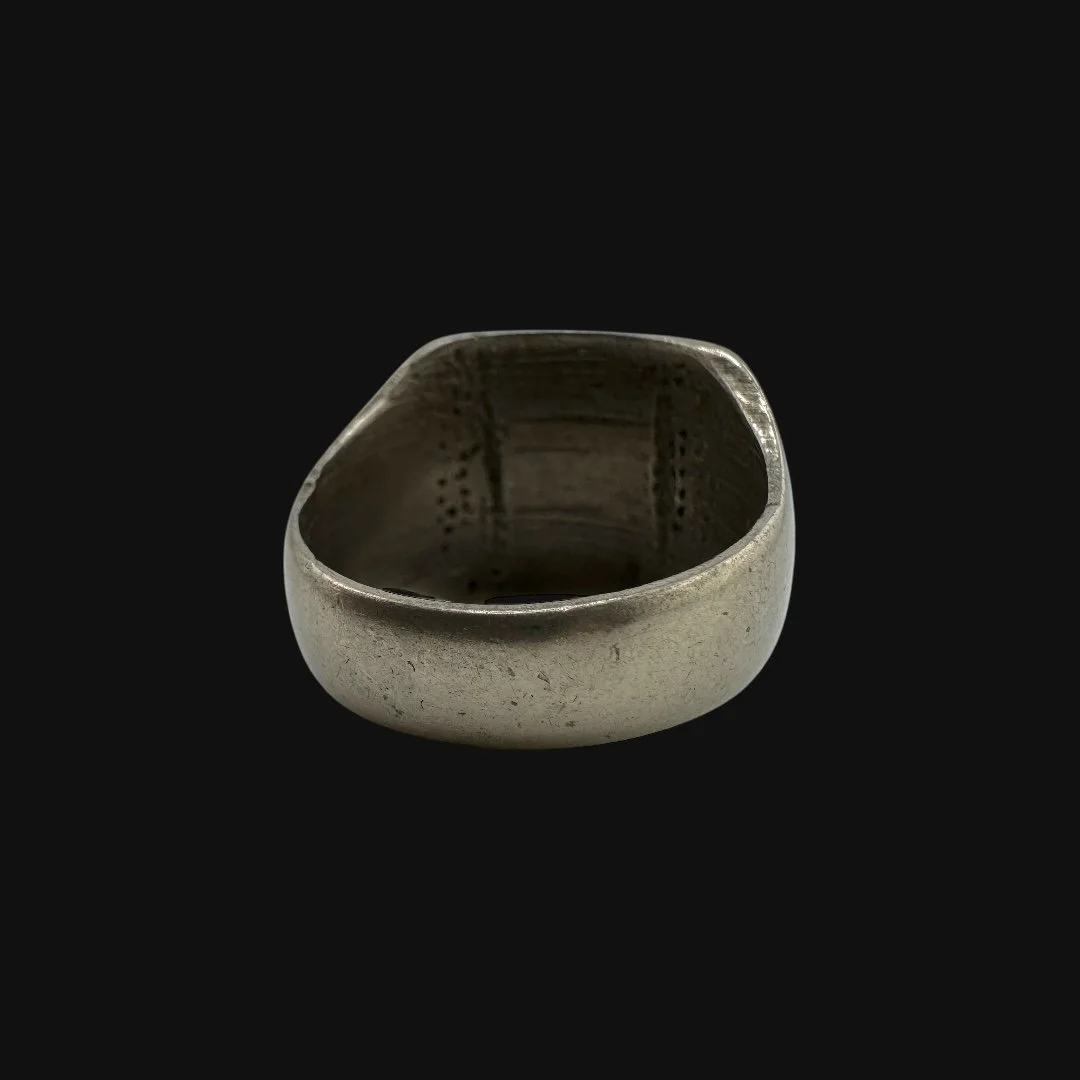 Image 6 of 12
Image 6 of 12

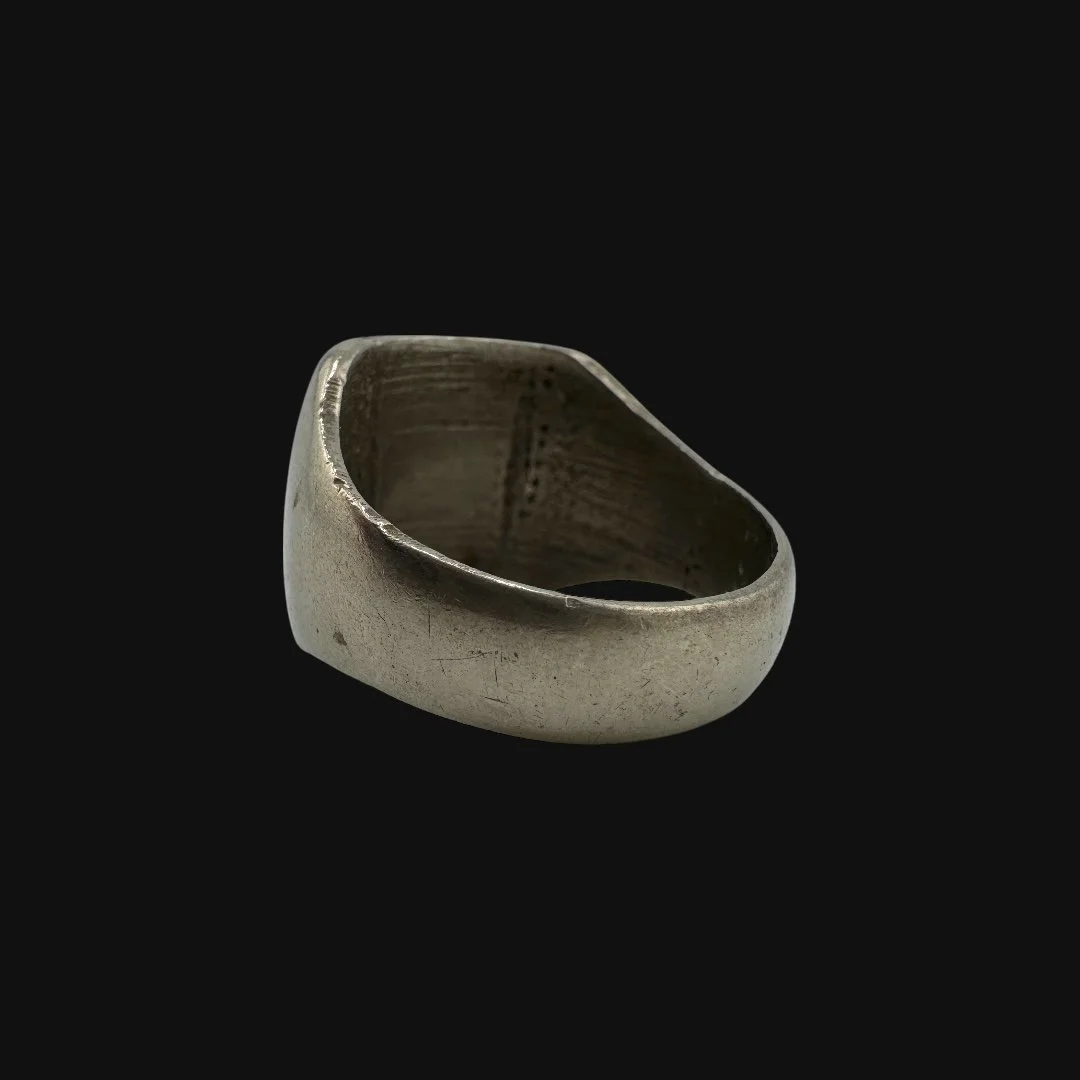 Image 7 of 12
Image 7 of 12

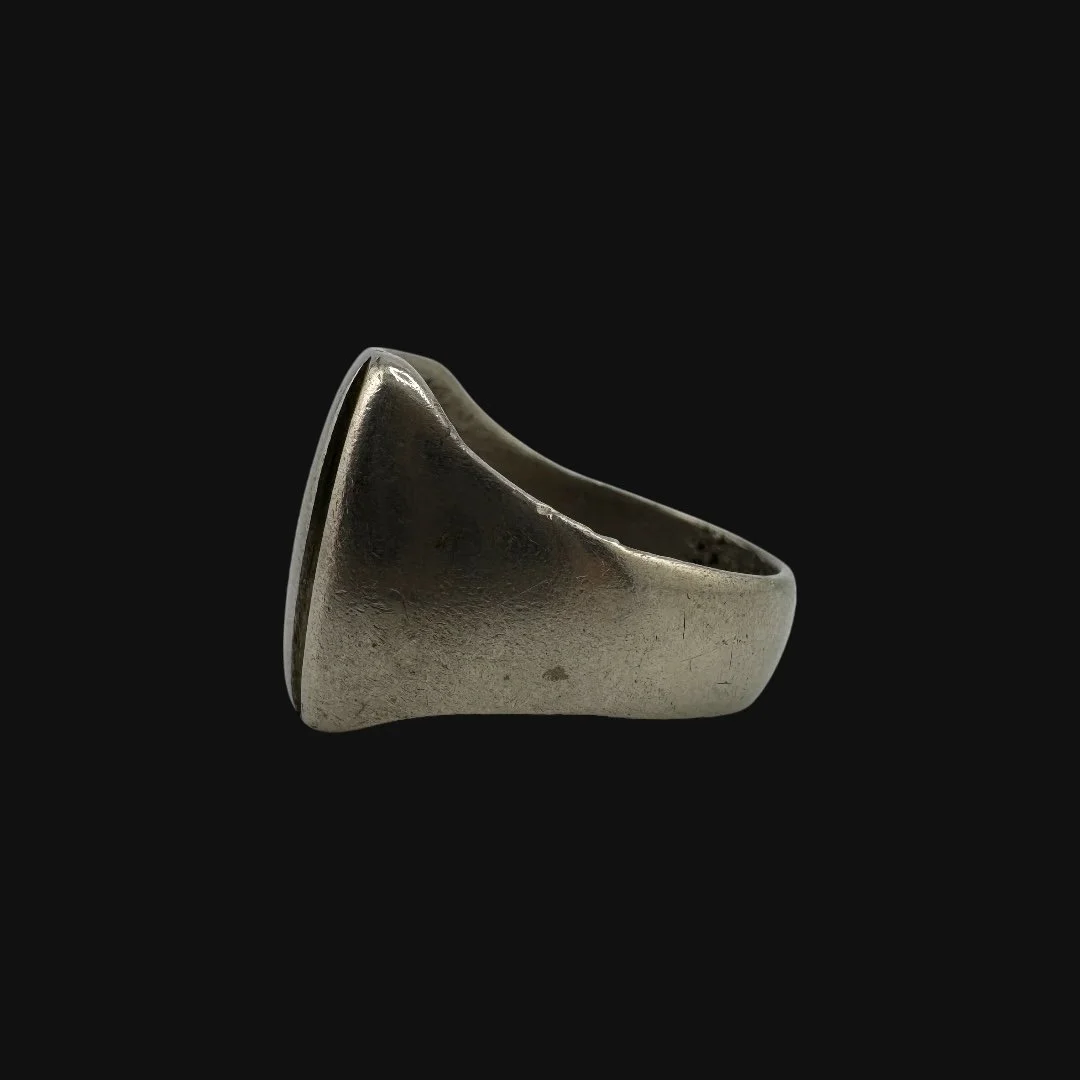 Image 8 of 12
Image 8 of 12

 Image 9 of 12
Image 9 of 12

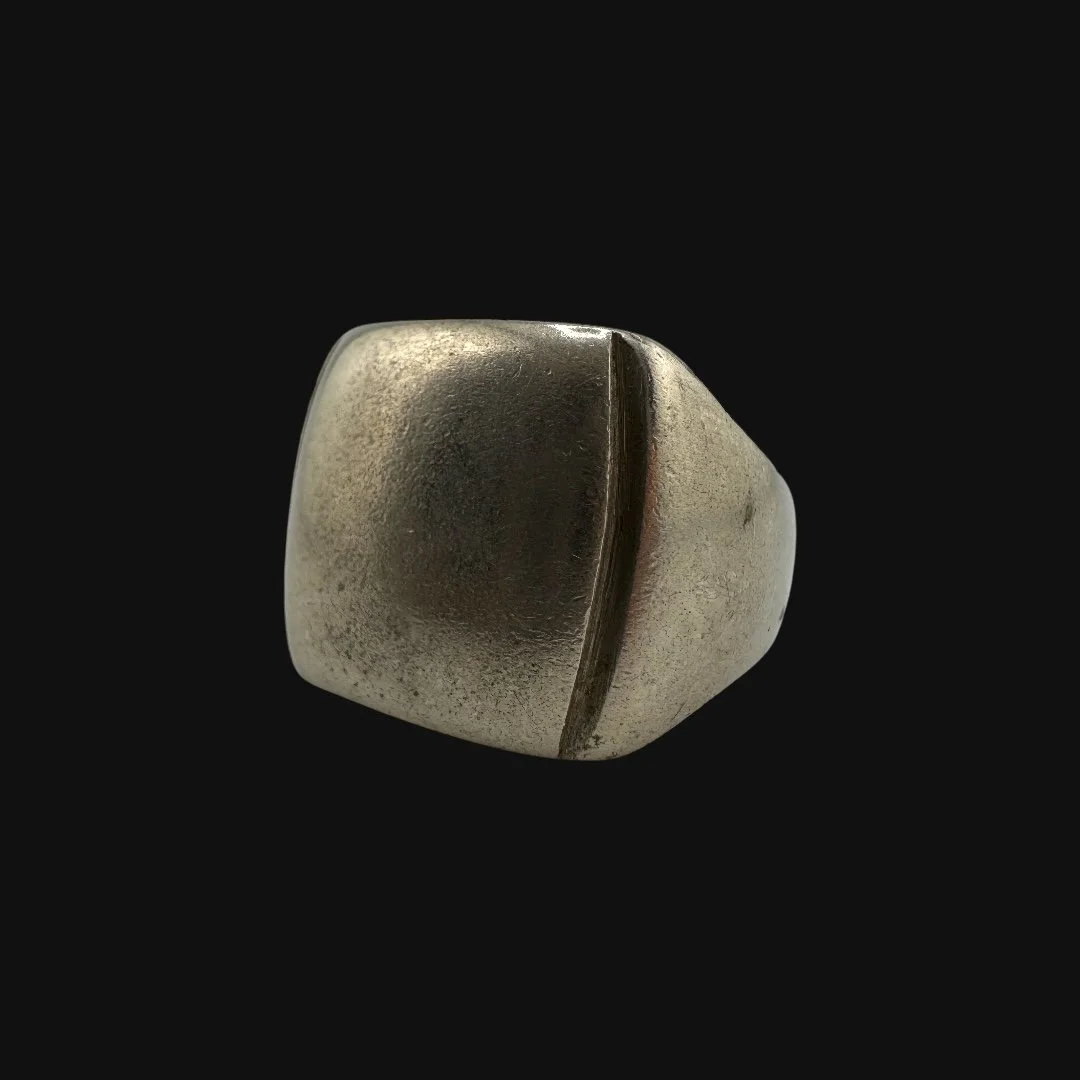 Image 10 of 12
Image 10 of 12

 Image 11 of 12
Image 11 of 12

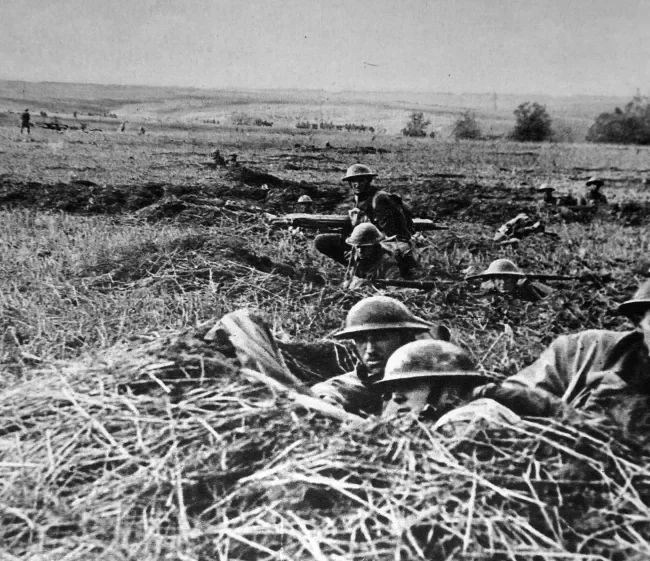 Image 12 of 12
Image 12 of 12













Original WWI Handmade Trench Art Frontline Ring – A.E.F. Bring Back - Made Using Leftover Battlefield Materials (Size 10.25)
Comes with a hand-signed C.O.A. and a full historical research write-up
From: World War I
Dated: 1917-1919
Ring Size: 10.25 (US)
Material: Battlefield Equipment
Wearable History Collection:
This authentic 1916-1918 WWI-era ring, preserved in its original and unaltered condition, combines exceptional craftsmanship with lasting durability, making it fully suitable for modern wear today. As part of our exclusive World War I “Wearable History Ring Collection,” it offers the rare opportunity to own and wear a genuine piece of World War I handcrafted by soldiers in the trenches from whatever materials they could salvage. Most of these rings were made using metal from downed aircraft, metal from spent artillery shells, strands of barbed wire, and fragments of scorched battlefield debris. Known as trench art, these pieces were shaped with improvised tools during rare moments of respite, often engraved with regimental insignias, battle names, or personal symbols. Each ring bears the marks of war and the artistry of its maker, transforming destruction into beauty. Fully wearable today yet unlike anything modern, every ring is a rare, one-of-a-kind link to the courage, resilience, and stories of the soldiers who fought in the Great War.
Historical Significance of the American Expeditionary Force During WWI :
The American Expeditionary Force (AEF), commanded by General John J. Pershing, was created after the United States entered World War I on April 6, 1917. Pershing insisted U.S. troops fight as an independent force, preserving national command and identity. The first elements landed in France in June 1917, but it was mid-1918 before large-scale combat operations began.
The AEF’s first offensive success came at Cantigny on May 28, 1918, when the U.S. 1st Division seized the village and held it against repeated German counterattacks, proving American fighting capability. In June, American forces played a decisive role in halting the last major German offensive toward Paris during the Aisne-Marne Campaign, highlighted by the battles of Château-Thierry and Belleau Wood(June 6–26). At Belleau Wood, U.S. Marines, fighting in brutal close-quarters combat, earned the nickname “Devil Dogs” from the Germans.
On September 12–15, 1918, the AEF launched its first fully American-led operation, the Saint-Mihiel Offensive, reducing a long-standing German salient in just four days, capturing over 15,000 prisoners and 400 guns. Two weeks later, the AEF began the Meuse-Argonne Offensive(September 26–November 11, 1918), the largest operation in U.S. military history, involving 1.2 million Americans. Fighting through dense forests, fortified lines, and constant German resistance, U.S. forces broke through the Hindenburg Line, advancing 32 miles and inflicting decisive blows that helped force the armistice.
By war’s end, over two million American soldiers had reached Europe, with more than 50,000 killed in action. In just over a year of major combat, the AEF revitalized exhausted Allied armies, demonstrated the capacity for rapid large-scale mobilization, and established the United States as a world military power. The battles of Cantigny, Belleau Wood, Saint-Mihiel, and the Meuse-Argonne became enduring symbols of American determination and sacrifice.
The Legacy Within This Ring:
This original World War I United States Army ring, handcrafted between 1917 and 1919, was skillfully made from discarded battlefield materials gathered in the heart of the Great War. Forged from fragments of shell casings, twisted wire, and other remnants of the front, it carries within its metal the memory of AEF campaigns fought from the shattered fields of the Marne to the dense Argonne Forest, and through the devastated villages of France. This was not merely a piece of jewelry brought back by an AEF soldier. It was an American soldier’s personal emblem. A tangible reminder of comradeship, sacrifice, and survival in one of history’s most grueling conflicts.
Comes with a hand-signed C.O.A. and a full historical research write-up
From: World War I
Dated: 1917-1919
Ring Size: 10.25 (US)
Material: Battlefield Equipment
Wearable History Collection:
This authentic 1916-1918 WWI-era ring, preserved in its original and unaltered condition, combines exceptional craftsmanship with lasting durability, making it fully suitable for modern wear today. As part of our exclusive World War I “Wearable History Ring Collection,” it offers the rare opportunity to own and wear a genuine piece of World War I handcrafted by soldiers in the trenches from whatever materials they could salvage. Most of these rings were made using metal from downed aircraft, metal from spent artillery shells, strands of barbed wire, and fragments of scorched battlefield debris. Known as trench art, these pieces were shaped with improvised tools during rare moments of respite, often engraved with regimental insignias, battle names, or personal symbols. Each ring bears the marks of war and the artistry of its maker, transforming destruction into beauty. Fully wearable today yet unlike anything modern, every ring is a rare, one-of-a-kind link to the courage, resilience, and stories of the soldiers who fought in the Great War.
Historical Significance of the American Expeditionary Force During WWI :
The American Expeditionary Force (AEF), commanded by General John J. Pershing, was created after the United States entered World War I on April 6, 1917. Pershing insisted U.S. troops fight as an independent force, preserving national command and identity. The first elements landed in France in June 1917, but it was mid-1918 before large-scale combat operations began.
The AEF’s first offensive success came at Cantigny on May 28, 1918, when the U.S. 1st Division seized the village and held it against repeated German counterattacks, proving American fighting capability. In June, American forces played a decisive role in halting the last major German offensive toward Paris during the Aisne-Marne Campaign, highlighted by the battles of Château-Thierry and Belleau Wood(June 6–26). At Belleau Wood, U.S. Marines, fighting in brutal close-quarters combat, earned the nickname “Devil Dogs” from the Germans.
On September 12–15, 1918, the AEF launched its first fully American-led operation, the Saint-Mihiel Offensive, reducing a long-standing German salient in just four days, capturing over 15,000 prisoners and 400 guns. Two weeks later, the AEF began the Meuse-Argonne Offensive(September 26–November 11, 1918), the largest operation in U.S. military history, involving 1.2 million Americans. Fighting through dense forests, fortified lines, and constant German resistance, U.S. forces broke through the Hindenburg Line, advancing 32 miles and inflicting decisive blows that helped force the armistice.
By war’s end, over two million American soldiers had reached Europe, with more than 50,000 killed in action. In just over a year of major combat, the AEF revitalized exhausted Allied armies, demonstrated the capacity for rapid large-scale mobilization, and established the United States as a world military power. The battles of Cantigny, Belleau Wood, Saint-Mihiel, and the Meuse-Argonne became enduring symbols of American determination and sacrifice.
The Legacy Within This Ring:
This original World War I United States Army ring, handcrafted between 1917 and 1919, was skillfully made from discarded battlefield materials gathered in the heart of the Great War. Forged from fragments of shell casings, twisted wire, and other remnants of the front, it carries within its metal the memory of AEF campaigns fought from the shattered fields of the Marne to the dense Argonne Forest, and through the devastated villages of France. This was not merely a piece of jewelry brought back by an AEF soldier. It was an American soldier’s personal emblem. A tangible reminder of comradeship, sacrifice, and survival in one of history’s most grueling conflicts.